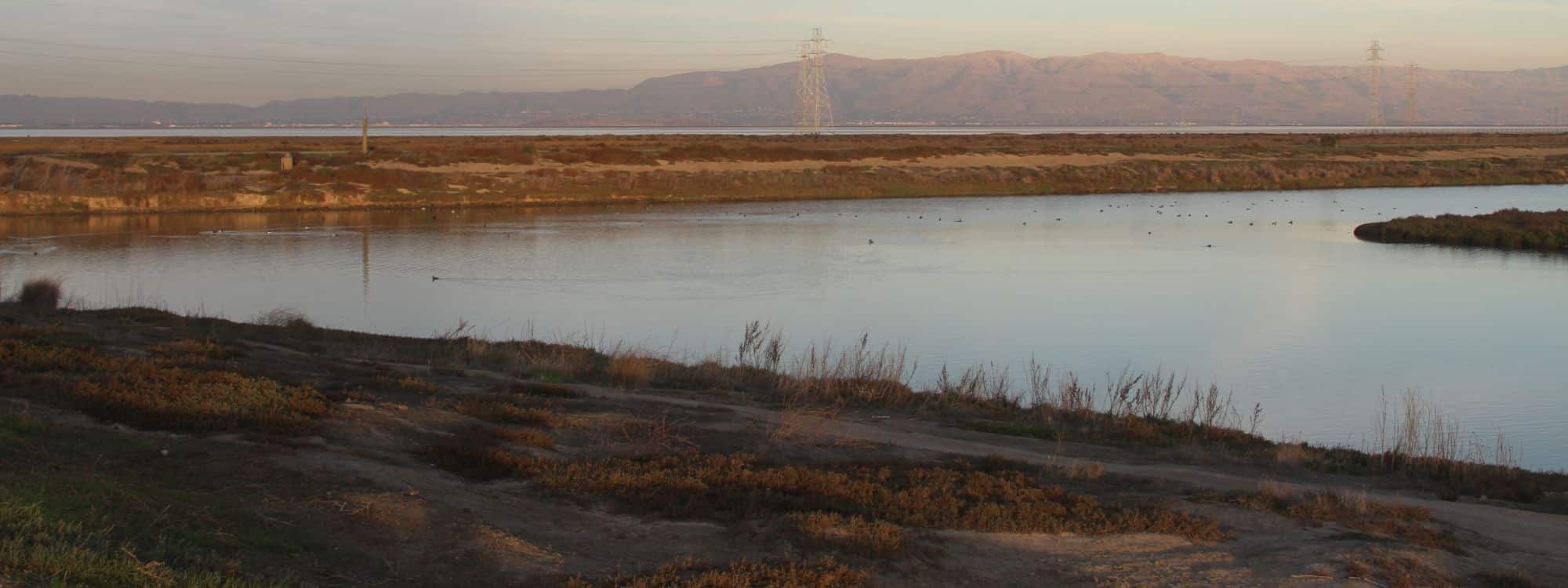A new report from SPUR and Nuestra proposes ways in which rising groundwater can be addressed through a comprehensive solution designed for structural, health, and equity concerns.
In May 2024, SPUR partnered with the community based organization Nuestra Casa to publish the case study “Look out Below,” which focuses on rising groundwater levels and mitigation strategies in East Palo Alto and San Mateo. High water tables are caused by rising sea levels that push groundwater up through the soil, and exacerbate the risks that make East Palo Alto particularly vulnerable to flooding, soil liquefaction, and toxin exposure.
What Problems Are Caused by Groundwater Rise?
How groundwater impacts flooding:
When groundwater is closer to the surface, it becomes saturated with water, which reduces its ability to absorb excess precipitation and protect against flooding. Nested between the San Francisco Bay and San Francisquito Creek, East Palo Alto’s low-lying position makes the region susceptible to flooding from both sides. This issue will only grow as water levels continue to rise—the County of San Mateo Sea Level Rise Vulnerability Assessment predicts that up to 45% of the total population and 61% of the total land area will be at risk for flooding in the high-end scenario if no solutions are implemented. Flooding may damage homes and businesses, in addition to impeding the movement of residents.
How groundwater impacts earthquakes:
The threat of earthquakes is heightened by water-saturated soil. East Palo Alto is built on marshes and fill, an amalgamation of sand and debris used to create artificial land. The occurrence of earthquakes in such areas can prompt a phenomenon known as liquefaction, where intense shaking causes the ground to sink and shift in a liquid manner. According to the U.S. Geological Survey, groundwater and sea level rise could increase liquefaction risk in low-lying areas, including East Palo Alto.
How groundwater impacts underground infrastructure:
The ability of water to destroy infrastructure that communities rely on isn’t limited to aboveground structures. Rising groundwater can break down stormwater pumping systems, drinking water systems, and flood sanitary sewers, which then overflow into the bay. The increasing salinity of groundwater due to rising sea levels works in tandem with the seasonal rise and fall of groundwater levels to degrade pipes and destabilize soil. These phenomena will increase as water levels continue to stray further from the historical levels that underground infrastructure was built to withstand.
Health Risks
Flooding
Flooding may damage infrastructure and cause mold growth, but it can also expose residents to waterborne illnesses such as E. coli, shigella, giardia, and viral infections. In addition, shallow groundwater located close to the surface carries high levels of pollutants from fertilizers, roadway runoff, and industrial land. This can be pushed through the surface as sea levels continue to raise water tables, which increases flooding and spreads soil contaminants.
Contaminants
Contaminants from industrial sites can become unearthed and travel with the help of rising groundwater. Volatile organic compounds (VOCs) are a variety of chemicals commonly found in auto body shops that can surface due to rising groundwater and travel as a vapor into businesses and homes through plumbing systems.The contaminants cause a variety of medical symptoms including headaches, fatigue, liver damage, kidney damage, and increased risk of some cancers.
Inequity
East Palo Alto has a history of discriminatory practices such as redlining and restrictive covenants. These are land use policies that limit access to resources such as loans, mortgages, and insurance on a racial basis, and they often result in East Palo Alto’s frontline communities being disproportionately exposed to environmental hazards. In addition, many in East Palo Alto experience low homeownership and low education rates, as well as higher poverty rates compared to the rest of San Mateo County, which limits residents’ ability to respond to disasters. Due to its history of discriminatory land use practices, more Black and Latinx communities today live near hazardous industrial sites including waste recycling, auto maintenance, and steel production. There are 50 industrial sites in East Palo Alto that are vulnerable to groundwater rise and the detrimental health impacts may be exacerbated in coming years.
What Can Be Done?
Groundwater rise must be researched and addressed as a holistic issue and serious concern by local municipalities, state, and regional governments working in collaboration. SPUR and Nuestra Casa published a set of recommendations for governments to follow to address groundwater and sea level rise:
Recommendations:
- “Require all city plans and infrastructure projects to assess the risks of groundwater rise and compound flooding.”
- “Consider adopting Shallow Groundwater Rise Overlay Districts, which specify design and retrofit requirements for underground infrastructure, roadways, and new shoreline development in high-hazard areas.”
- “In partnership with impacted communities, update guidance for remediation requirements of shoreline sites to incorporate risks of contaminant mobilization from groundwater and sea level rise.”
- “Update sea level rise and flood maps to reflect shallow groundwater rise so that relevant agencies can begin planning processes to address it.”
“Pursue a variety of innovative funding mechanisms to support groundwater rise research, adaptation planning, and implementation projects.”
Although groundwater is rising, adaptation and education efforts are too. In the wake of new research on rising water, building a climate resilient future through collaboration is more important than ever.
Zoe Ivatt is Greenbelt Alliance’s Summer Resilience Intern through Enterprise for Youth’s Climate Career Corps Individual Placements program.
Photo of the Palo Alto Baylands.





